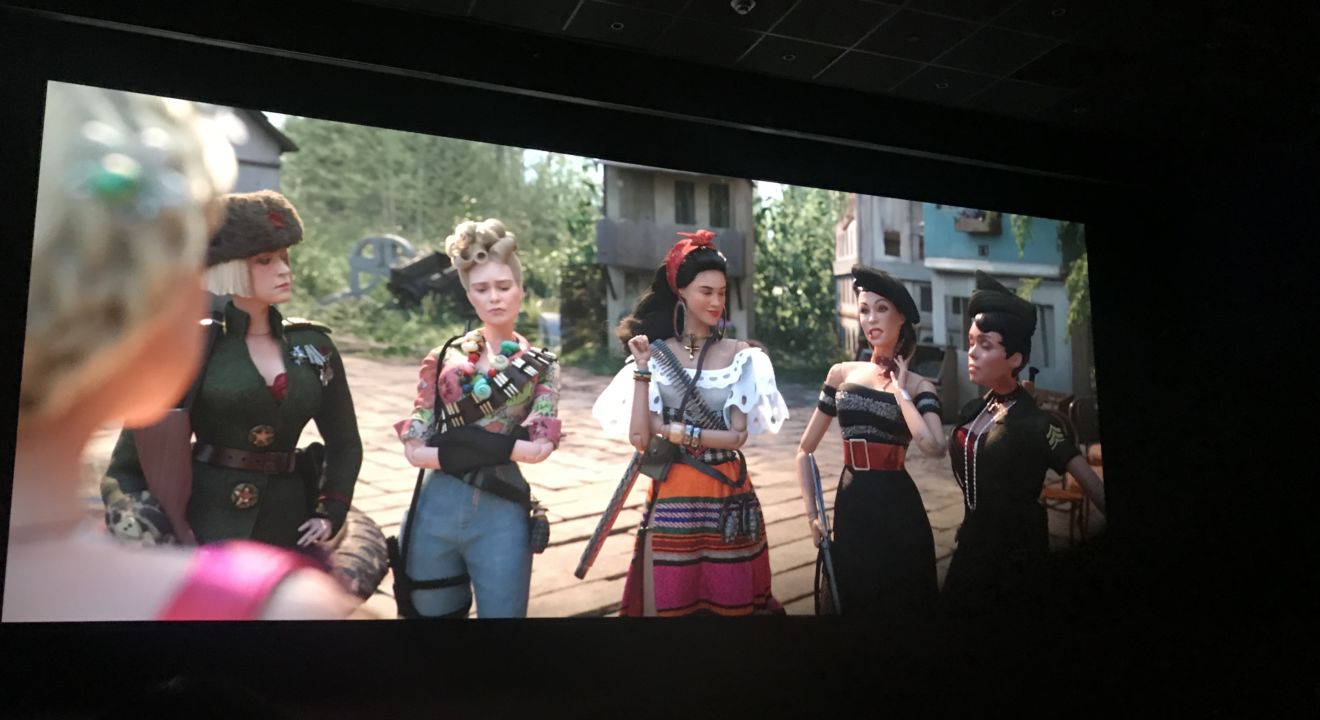Culture December 21, 2018


Robert Zemeckis’s new film “Welcome to Marwen” is a brilliant story about Mark Hogancamp, a man who was brutally beaten by five men in a hate crime outside a bar in Kingston, NY. The film is not linear, so the few particulars that Hogancamp can remember about the incident, or his life before it, are woven into multiple time zones where we enter Hogancamp’s interior landscape.
Struggling with debilitating anxiety and PTSD, Hogancamp takes his recovery into his own hands, or more accurately, he puts it into the hands of an American pilot action figure named “Captain Hogie.” The action-figure is modeled after Hogencamp himself, and lives in a 1/6 scale World War II Belgian town called “Marwen” that Hogancamp built next to his trailer home. The fictional town is also populated by Nazi villains fashioned after his assailants, and a posse of badass women, in the form of Barbies or glamanistas, who protect him. These glamanistas (Leslie Mann, Janelle Monae, Eliza Gonzalez, Merritt Wever, and Leslie Zemeckis) are inspired by women in Hogancamp’s life who take care of him without judgement. Women are his saviors and he yearns to feel their essence, often wearing their shoes – but more on that when you see the film!
“Welcome To Marwen” does a remarkable job of capturing what it’s like to live with profound anxiety and trauma. In the initial courtroom scene, Hogancamp is asked to read a statement about the evening of the assault while his accused assailants sit across from him. Before he can speak, he catches a glimpse of a tattoo on the arm of one of the offenders and slides into a freefall of mental anguish. The screen bursts to life with a full-fledged combat scene depicting Hogancamp’s Nazis fighting Captain Hogie. The scene then changes to Hogancamp running down the hall and out the door of the courthouse. His hearing is rescheduled, and Hogancamp returns to the safety of his make-believe town.
There are many such moments in “Welcome To Marwen,” where we enter Hogancamp’s imaginary world and experience both his anguish and the hypervigilance needed to protect himself and his female action heroes. Over the course of the film, there is a surprising and poignant arc that provides insight into art as healer. You must go see the film for yourself as Steve Carell gets serious and gives a beautifully compelling performance that gently reveals the kindness and humility of Hogancamp as an artist. His generosity of compassion steadily grows as he understands his memory loss and works to come into wholeness.
The technical aspects of creating these action figures are an impressive testament to Zemeckis’ longstanding career as an innovative screenwriter and director.
“Welcome to Marwen” is an invitation into the mind of Hogancamp. And for perhaps the first time in cinematic history, it offers a visual interior landscape of what PTSD and anxiety looks and feels like. The film provides us with the power of the healing process – from the darkness of fear to confronting one’s demon, and finding strength and acceptance in oneself.
Days later, I’m still thinking about “Welcome To Marwen,” the mark of a great film. So many people today struggle with trauma. This film can be a vehicle for better understanding as well as a testament to how the arts can heal.